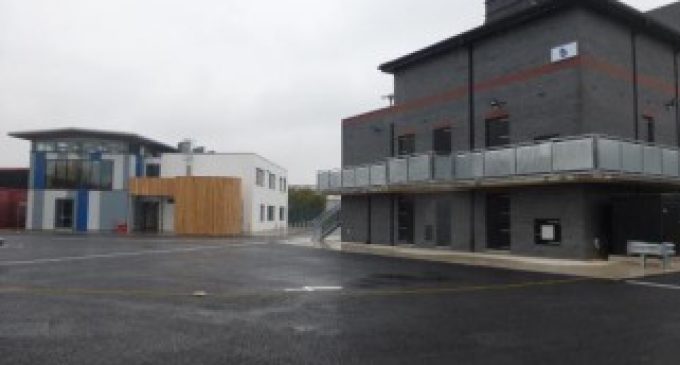Britcon completes 7.4m project

Britcon has completed a £7.4 million project to build a new state of the art training facility in Park Royal for the Babcock International Group, the chosen training partners for the London Fire Brigade (LFB). The Emergency Services Training Centre in Park Royal is part of a larger project to deliver new and upgraded training facilities to the LFB.
Britcon was appointed as lead contractor by Babcock which has secured a 25 year contract with LFB to deliver the biggest modernisation of fire fighter training for more than a century. The initiative aims to increase the amount of time available and the quality of training for firefighter training and save the LFB an estimated £66 million over the next 25 years.
The Emergency Services Training Centre at Park Royal has been built on a brownfield site which was formerly used for industrial trading. The new facility includes a comprehensive firehouse with basement for fire behaviour and Breathing Apparatus (BA) and Real Fire training. The building also incorporates variable internal doors to provide a range of training scenarios, together with a range of rope access for high line rescue training and ladder training. The training building incorporates BA classrooms, syndicate rooms, management suite, and welfare facilities. A commercial kitchen installation with full dining facilities is also included.
The Park Royal site has been designed with significant environmental benefits with a CHP heating system and PV installed on the sloping roof area. The structure has a green roof, and the aim is to recycle as much run‐off water as possible, all meaning that the overall building is expected to achieve a BREEAM (Building Research Establishment Environmental Assessment Methodology) Excellent rating.
Britcon, which this year celebrates its 25th anniversary, has previously constructed a number of fire and rescue projects including the new £2 million Real Fire Training Facility for South Yorkshire Fire & Rescue. It was on this project that Britcon delivered some of the most advanced fire simulation technology available, allowing crews to recreate conditions that they a likely to encounter in real life incidents. Britcon has also delivered the USAR facilities and BA buildings for West Yorkshire Fire & Rescue and recently a collapsed building training facility for Lincolnshire Fire & Rescue.
Britcon advised Babcock during the bid process for the Park Royal training site which started on site in June 2013. It managed the post demolition site remediation and preparation process before delivering structures for highly specialist use. State of the art features include two gas fired ‘smoxidisers’ that act like a catalytic converter to clean the smoke from seven carbonaceous burn training rooms in the building in compliance with the London clean air act. A simulated sewer system also creates opportunities for confined space training and a large training tower provides a working at height training facility.
Paul Clarkson, Managing Director at Britcon said: ‘We have built a very successful partnership with Babcock International and developed a highly successful, bespoke model for the 21st century needs of the UK fire and rescue service. This is a unique, world leading facility that incorporates specialised materials and structures to withstand temperatures of up to 800 degrees combined with techniques to manage smoke and water extraction as well as methods to provide utmost safety for training firefighters.’
Britcon is one of few contractors in the UK able to deliver such bespoke building solutions for specialised emergency services training. It has previously delivered projects for Broughton Fire Station in Milton Keynes, South Yorkshire Fire and Rescue Services new training facility and the Urban Search and Rescue Centre for West Yorkshire Fire and Rescue. It has also completed projects for Defence Estates, Port Authorities and Railtrack.
Babcock Project Director Steve Smith said: ” We are delighted with the facility which will enable us to bring Firefighter training to a new level, which in turn makes London a safer place for all.’







